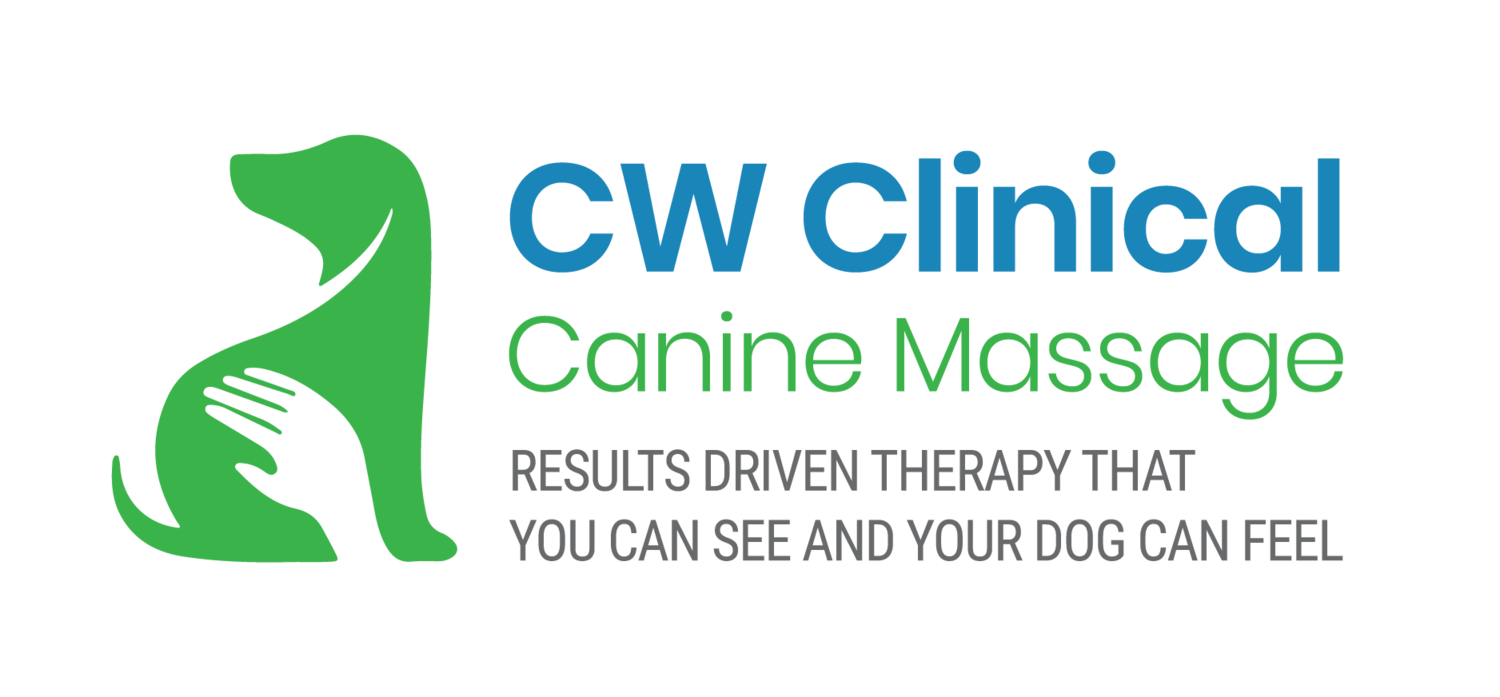Trigger points and your dog
WHAT ARE TRIGGER POINTS?
Image source: https://essentiallydogs.com/dog-anxiety-acupressure
Commonly referred to as ‘knots’, trigger points are sensitive or sore spots found in soft tissue and are palpable within the muscle flesh.
The fibres in a muscle are instructed to contract and relax by nerve impulses from the brain. If the muscle is injured or over stimulated it is unable to relax. The muscle fibres shorten and a tight band is formed within the affected muscle. The blood and oxygen supply decreases in the muscle fibres and waste products begin to accumulate. The point where these waste products accumulate is known as a trigger point and can lead to nerve irritation and pain.
The size of a trigger point will vary according to the size, shape and type of muscle that it sits in.
There are two definitions of the state of a trigger point and these are:
· active – this means that the pain, tenderness or sensation is present continuously and may be referred to other areas of the body.
· latent - does not cause pain unless stimulated but will still cause muscle weakness and reduce the range of motion of the affected muscle.
Why do trigger points occur?
Trigger points are formed due to various muscle stresses such as:
Injury
Poor posture
Repetitive movements
Overuse
Sudden excessive stretching
Cage rest
Old age
Existing orthopaedic conditions causing overuse of the surrounding muscles
Image source: http://www.vasg.org/myofascial_trigger_point_disease.htm
How uncomfortable are trigger points?
The pain caused by a trigger point can range from mild tenderness and discomfort to debilitating, chronic pain. Applying pressure to a trigger point can cause tenderness, make the skin ‘twitch’ or even make the sufferer ‘jump’ from the pain.
Apart from the pain and sensitivity caused by trigger points locally, they can also cause patterns of referred pain elsewhere in the body which are seemingly not linked to the affected muscle and can mimic other conditions such as arthritis.
If trigger points are left to become chronic, they will cause permanent tissue changes or can accumulate and manifest into myofascial pain syndrome. It is therefore a very good idea to get your dog seen by a competent and fully trained therapist.
What are the effects of trigger points on my dog’s body?
When trigger points are present they may cause:
Decrease in range of motion and increase in any existing mobility issues
Over compensation in the surrounding muscles due to protective muscle splinting
Muscle weakness due to shortening of the fibres
Referred pain
Local twitch response when stimulated
Tenderness and pain
Increase in pain from any existing orthopaedic condition
Decreased performance
What tell tale signs should I look for?
Your dog’s skin may twitch and they may have a ‘tickly spot’. The tickly spot doesn’t tickle at all, this is a sign that a trigger point is present and your dog is experiencing discomfort.
There may be coat changes in your dog’s fur in the form of flicks or rough spots that are new in a particular area.
Your dog may seem to be stiff or had a change in attitude to walks and exercise.
They may be unwilling to be touched or groomed in a particular area.
How can massage help?
Massage can:
Help to address any trigger points that may be present together with any overcompensation.
Reduce discomfort and pain which will have a positive effect on your dog’s mood, mobility and muscle strength.
Improve performance and range of motion.
Help your dog to settle more easily and improve sleep quality.
Myofascial release is thought to help to align the fascia surrounding the muscles improving circulation and promoting the normal range of motion of movement in muscle. All Canine Massage Guild Therapists have been coached in both direct and indirect fascia release and the ©Lenton method which is exclusively taught to Natalie Lenton’s students. You can find your nearest therapist here.
References
Laura Inverarity, DO. (2019). What are Trigger Points and How Can PT Help?. Available: https://www.verywellhealth.com/trigger-point-2696165
Natalie Lenton: Trigger Points. Available: https://www.k9-massage.co.uk/conditions/soft-tissue/trigger-points
Simeon Neil-Asher (2014). The Concise Book of Trigger Points. Berkeley, California: Lotus Publishing: 3rd edition.
Trigger points: Massage and Myotherapy. Available: https://vfalearning.vic.edu.au/what-are-trigger-points
Simons, D. G. and Travell, J. G. (1999) Travell & Simons’ myofascial pain and dysfunction : the trigger point manual. 2nd ed. Williams & Wilkins. Available at: http://search.ebscohost.com/login.aspx?direct=true&db=cat03712a&AN=bpp.u24111&site=eds-live





